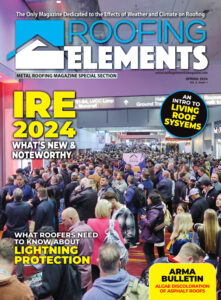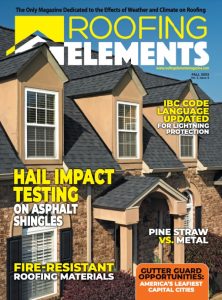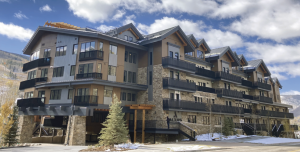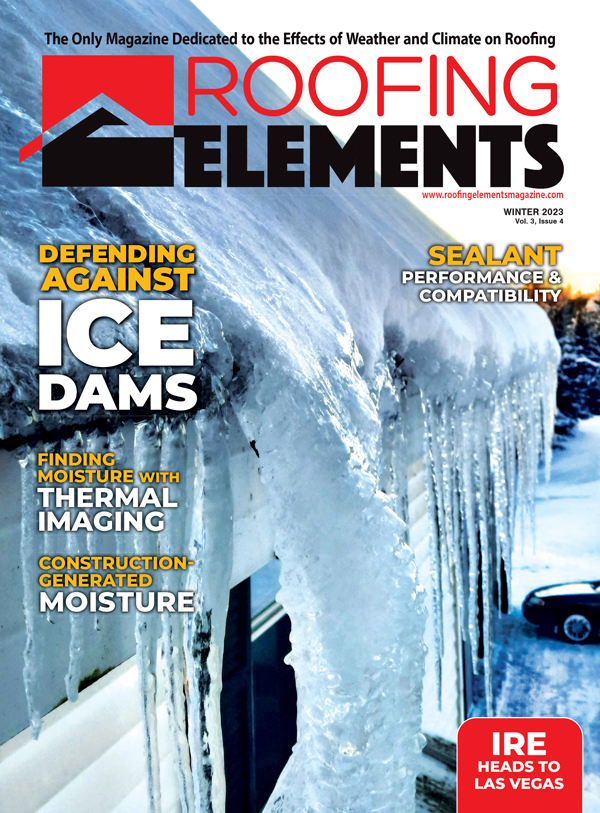by Chuck Cooley, Hicks Lightning Protection
RISK MANAGEMENT
Risk management is a method that seeks to eliminate, reduce, and avoid the effects from potential exposures and avoid any future losses. Any loss due to potential exposures, can impact time, production, and revenue. We need to identify and possibly control the potential risk.
One of the risks that sometimes is overlooked, is the risk to a structure or a building due to a potential lightning event. Lightning Protection Systems are the last things to be installed on a project, but it’s also the first thing that is removed or value engineered out of a project. The cost of a properly installed lightning protection system can be less than 1% of the overall cost of the project. However, the repercussions/damages of not having a lightning protection system in the event of a lightning strike, can outweigh the initial proposed cost.
Engineers, architects, and building owners typically rely on the risk assessment that is found in Annex L of NFPA 780 standard, the Installation of Lightning Protection Systems. This annex provides both, a simplified assessment, and a detailed calculation to achieve a more in-depth analysis. This article will discuss and provide information on the simplified version of the risk assessment.
The NFPA risk assessment takes into consideration the following in determining whether a lightning protection system should be installed, or possibly considered optional.
• Building Environment
• Type of Construction
• Structure Occupancy
• Structure Contents
• Lightning Stroke Consequences
There are some instances where the need for lightning protection should be given serious consideration, regardless of the outcome of the risk assessment. Some examples would be:
• Large crowds
• Structures that contain explosives or flammable material
• Structures containing irreplaceable cultural items
• Continuity of critical services (ie. 911 call centers; hospitals)
• Tall, isolated buildings
• Environmental consequences
• High lightning flash frequency
RISK ASSESSMENT
The first formula that makes up the risk assessment is the Annual Threat of Occurrence. It is derived from the following equation:
Nd = (Ng)(Ad)(Cd)(10-6) (1)
where:
Ng = lightning cloud to ground flash density flashes/km2/year. This value is obtained from the U.S. Lightning Flash Density Map (shown on opposite page).
Ad = is the equivalent collection area of the structure (m2). This is derived from the length “L”, width “W”, and height “H” of the structure.
Ad = LW + 6H(L+W) + ∏(9H2) (2)
Cd =is the relative structure location. The value that best suits the location of the structure will be used:
Relative Structure Location Cd Structure surrounded by taller structures
or trees within a distance of 3H0.25 Structure surrounded by structures or equal
or lesser height within a distance of 3H 0.5 Isolated structure, with no other structures located within a distance of 3H 1 Isolated structure on hilltop 2
(3)
The second formula that makes up the risk assessment is the Tolerable Lightning Frequency. It is derived from the following equation:
Nc = (1.5 x 10-3 ) / C (4)
where:
C = (C2)(C3)(C4)(C5) (5)
Construction Coefficient – C2
Structure Metal Roof Nonmetallic Roof Combustible Roof Metal 0.5 1.0 2.0 Nonmetallic 1.0 1.0 2.5 Combustible 2.0 2.5 3.0
(6)
Structure Contents Coefficient – C3
Structure Contents C3 Low value noncombustible 0.5 Standard value noncombustible 1 High value, moderate combustibility 2 Exceptional value, flammable liquids,
computer, or electronics3 Exceptional value, irreplaceable cultural items 4
(7)
Structure Occupancy Coefficient – C4
Structure Occupancy C4 Unoccupied 0.5 Normally occupied 1 Difficult to evacuate or risk of panic 3
(8)
Determination of Lightning
Consequence Coefficient – C5
Lightning Consequence C5 Continuity of facility services not required,
no environmental impact1 Continuity of facility services required,
no environmental impact5 Consequences to the environment 10
(9)
This simplified risk assessment takes the calculated tolerable lightning frequency (Nc) and compares that it to the annual threat of occurrence (Nd). If Nd is less than or equal to Nc, a lightning protection system is optional. If Nd is greater than Nc, it is recommended that a lightning protection system be installed.
LIGHTNING PROTECTION INSTALLATION
AND SAFETY
When having a lightning protection system installed, the components being used must comply to UL96 Lightning Protection Components. Also, make sure the lightning protection contractor is certified with Underwriters Laboratory and the Lightning Protection Institute. After the installation has been completed, the installing contractor will apply for a UL Master Label or a LPI Master Installation Certificate. This inspection is done by a 3rd party to ensure the installed system, complies to the requirements of NFPA 780, UL96A or LPI 175.
It is also important that everyone know the effects and the dangers of lightning. Lightning Safety Awareness Week was created in 2001 to inform people about the dangers of lightning. In 2022, Lightning Safety Awareness Week will start the week of June 19th. For more information on lightning safety, visit the Lightning Protection Institute at www.lightning.org or the National Lightning Safety Council at www.lightningsafetycouncil.org. l
(1),(2),(3),(4),(5),(6),(7),(8),(9) Risk assessment charts and equations – NFPA 780 – Installation of Lightning Protection Systems – www.nfpa.com
(A) Cloud-to-ground flash density gridded map 2021 – www.vaisala.com – 2021 Annual Lightning Report
About the Author:
Chuck Cooley is the Business Development Manager of Hicks Lightning Protection, Ponder, Texas.


